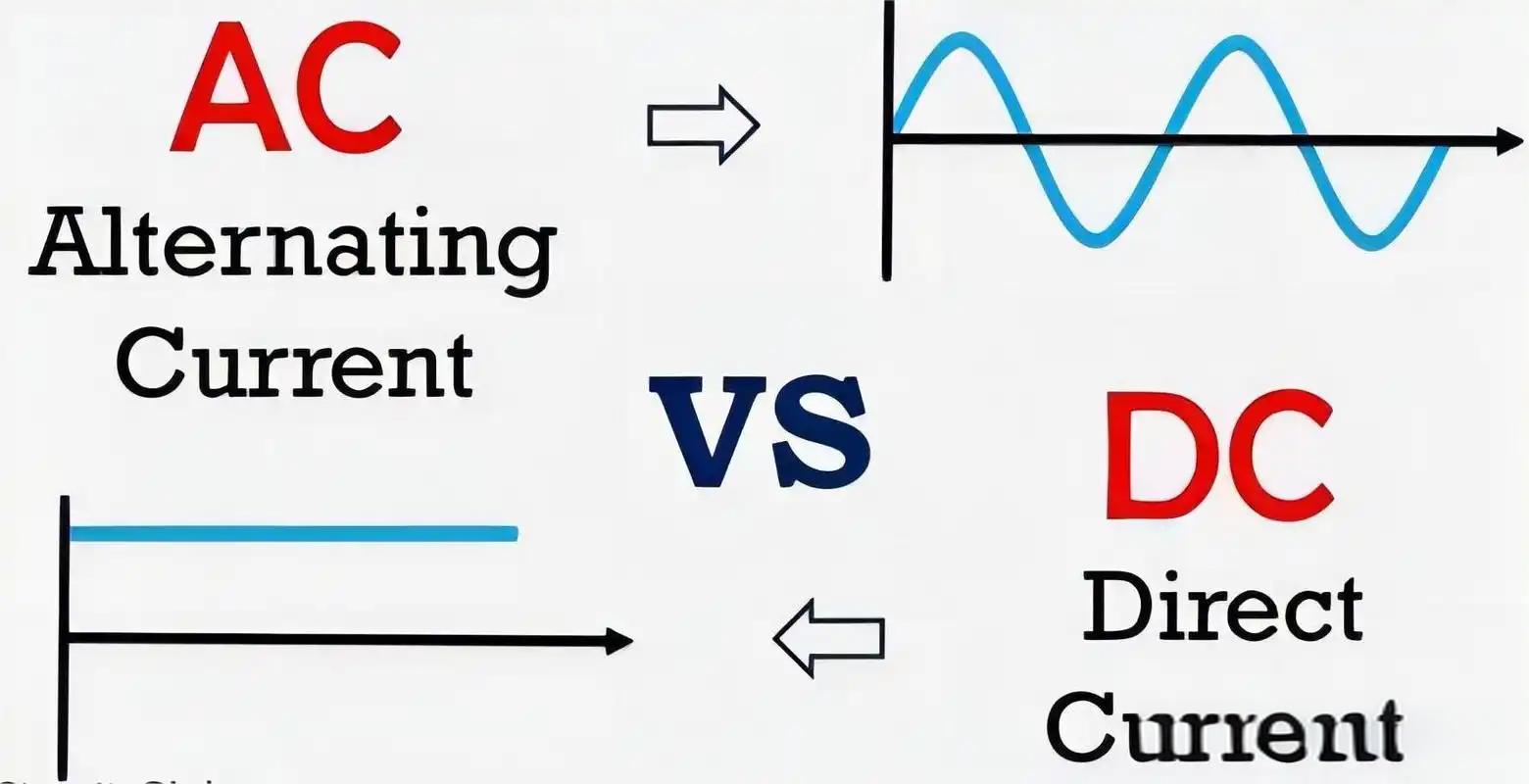AC vs. DC: Which is Better?

What is a Power Supply?
A power supply is a device that provides electrical energy to an electrical load (such as a computer, TV, or other gadgets). Simply put, it’s the intermediary that takes electricity from an external source and converts it to the appropriate form needed by the device. Power supplies can be used to convert alternating current (AC) into direct current (DC), or vice versa, depending on the needs of the device.
Think of a power supply as the "heart" of most electronics, ensuring the device gets the right amount of power. Whether the source is a battery, wall outlet, or generator, the power supply ensures that the energy delivered is converted and distributed in the right manner. For example, a laptop charger takes AC power from your wall outlet and converts it into DC to charge your device. Without the power supply, electronic devices would not receive the right voltage or current to operate.
What is Alternating Current (AC)?
Alternating current (AC) is the type of electrical current that switches direction periodically. Unlike direct current (DC), where the flow of electricity moves in one direction, AC constantly reverses direction, typically 60 times per second in the United States (60 Hz). AC is the type of electricity that powers homes, businesses, and industries.Why does AC Reverse Direction?
The main reason for the use of AC in power distribution is that it’s more efficient for long-distance transmission. When AC is transmitted over power lines, it loses less energy compared to DC because it can be easily converted to different voltage levels using transformers. This makes it easier to send electricity from power plants to homes and businesses, sometimes traveling hundreds of miles without significant loss of energy.
The ability to adjust the voltage of AC power via transformers makes it ideal for a wide range of applications, from powering large industrial machines to household appliances like refrigerators and air conditioners. The simplicity and cost-effectiveness of converting AC make it the most common form of power used in grids across the world.
Linear vs. Switching AC/DC Power Supply
When it comes to devices that convert AC into DC, there are two main types of power supplies: linear and switching. Let’s take a closer look at both.Linear Power Supply
A linear power supply uses a straightforward method to convert AC into DC. It typically involves a transformer, rectifier, and regulator. First, the AC current is passed through a transformer to reduce the voltage. Then, the current is rectified (converted to DC) using diodes. Finally, the output is regulated to a stable voltage using a voltage regulator.
While linear power supplies are reliable and simple to use, they tend to be bulky, inefficient, and generate a lot of heat. Because they don't adjust the energy they draw from the power source, they tend to waste a lot of energy in the form of heat, which means they need larger heat sinks to keep them from overheating.
Switching Power Supply
Switching power supplies, on the other hand, are more modern and energy-efficient. Instead of using the traditional method of converting and regulating the current, a switching power supply rapidly turns the current on and off, adjusting the voltage as needed through high-frequency switching. This results in less wasted energy, smaller components, and the ability to deliver a stable DC output more efficiently than linear power supplies.

Switching AC/DC Power Supply
Switching AC/DC power supplies are widely used in today’s electronic devices because of their high efficiency and compact size. These power supplies not only convert AC to DC, but they do so by using high-frequency switching to reduce power loss. The current is rapidly switched on and off at very high speeds (often in the kHz or MHz range), which allows the power supply to achieve the same results as linear supplies but with much less waste.By using switching technology, these power supplies also have the advantage of being smaller and lighter than their linear counterparts, making them a perfect choice for portable electronics. For instance, power adapters for laptops or even the chargers for electric vehicles use switching power supplies. In addition to size and energy efficiency, switching power supplies also provide better voltage regulation and can handle a wider range of input voltages.
Their ability to operate at different voltages and provide stable DC power makes them the preferred choice for modern consumer electronics and industrial applications. Essentially, they represent the future of power conversion.
Why is DC Current Not Used in Homes?
DC current, despite its importance in powering devices like batteries and electronics, is not used for home power supply for several reasons. The main issue lies in the transmission of DC over long distances. When electricity is transmitted over long distances, it encounters resistance, which leads to a loss of energy.AC, on the other hand, can be transmitted over long distances much more efficiently. The key advantage of AC is its ability to be stepped up or down in voltage using transformers. By increasing the voltage for long-distance transmission, less energy is lost as the current travels over power lines. This is why AC is the preferred choice for power grids.
Furthermore, converting AC to DC for household appliances would require additional infrastructure and devices (like converters or rectifiers), making the system more complicated and costly. The added expense and complexity make it impractical for widespread use in homes. Thus, while DC is essential for devices like your smartphone or laptop, AC is far more efficient for large-scale power distribution.
What is Better, AC or DC?
Both AC and DC are indispensable in modern society, but each type of current is better suited for different applications. AC is the optimal choice for power distribution across long distances. The ability to transform the voltage with minimal loss and efficiently distribute power through grids makes AC ideal for use in homes, businesses, and industries.DC, however, is much better for devices that need a constant, stable flow of electricity. Electronic devices like computers, radios, and mobile phones require DC to function properly. DC also powers batteries, solar cells, and electric vehicles, where a steady and reliable power source is critical.

In summary, the choice between AC and DC depends on the need. For power transmission and high-voltage applications, AC is the clear winner. For devices and applications requiring a steady, uninterrupted power supply, DC is the preferred option.
Is a Battery AC or DC?
Batteries provide DC power. The chemical reactions within a battery generate a flow of electrons in a single direction, from the negative terminal to the positive terminal. This makes battery-powered devices, such as flashlights, smartphones, and even electric vehicles, rely on DC.Though most home appliances use AC power, devices that run on batteries internally use DC. This is because DC is a steady, predictable power source that can provide a constant level of energy. For example, a phone charger takes the AC from your wall outlet and converts it into DC to charge your phone's battery.
In fact, even though AC is used for power distribution, nearly every portable device uses DC. It’s a direct flow of electricity that allows batteries to charge and power devices efficiently.
Where is DC Current Used?
DC current plays a significant role in many modern technologies. It is the primary source of power for all battery-operated devices, such as cell phones, laptops, tablets, and electric cars. Solar panels also generate DC power, which is then converted into AC for use in homes or stored in batteries for later use.DC is also used in small electronic circuits, where a consistent and unidirectional flow of electricity is needed. Most internal components in your electronics, from microprocessors to sensors, rely on DC to function. Additionally, DC is used in industrial processes like electroplating, where a constant current is required to coat objects with metal.
The need for DC power has grown with the rise of renewable energy sources, electric vehicles, and portable electronic devices. Without DC, many of the modern conveniences we take for granted would not be possible.
What Uses AC Current?
- Household appliances – refrigerators, washing machines, air conditioners
- Led bulbs (though some may require a converter)
- Electric grids
- High voltage transmission lines
- Motors and appliances
- Induction motors
- Industrial equipment
- Large industrial motors
- Hvac systems
- Electric power tools
- Electric vehicles (EVs)
- Medical equipment
- Computers and data centers
- Television sets
- Home audio systems
- Projectors
Why is AC Preferred Over DC?
AC is preferred over DC for several reasons, mainly due to its efficiency in power transmission. The ability to change the voltage of AC with transformers allows for the transmission of electricity over long distances with minimal loss of energy. AC is also easier and less expensive to generate in power plants, which is why it’s used for the vast majority of electricity grids worldwide.Another reason for AC’s dominance is that it’s easier to create alternating currents at the necessary frequencies. Power plants can generate AC more easily and cheaply, which contributes to its widespread use. For home and industrial applications, AC provides a cost-effective and efficient solution to power distribution.
FAQs
1. What’s the main difference between AC and DC?AC changes direction periodically, while DC flows in one direction only.
AC is more efficient for long-distance transmission, which is why it's used for power grids.
Yes, through devices like rectifiers and power supplies.
Batteries generate DC, which is ideal for powering electronic devices directly.
DC is generally considered safer for low-voltage applications, but both types of current can be dangerous at high voltages.
Phones use DC power, but they charge from AC outlets through a power adapter.
Statement: All articles (images, texts, audio) on this site are uploaded and shared by users, or integrated from relevant internet sources, only for user's learning. If your rights are violated, please contact the administrator to delete! Link to this article: https://www.jinftry.com







